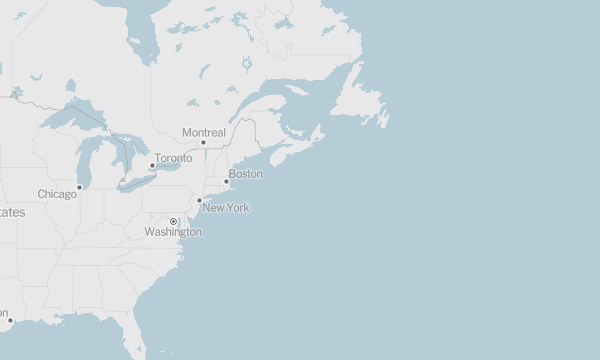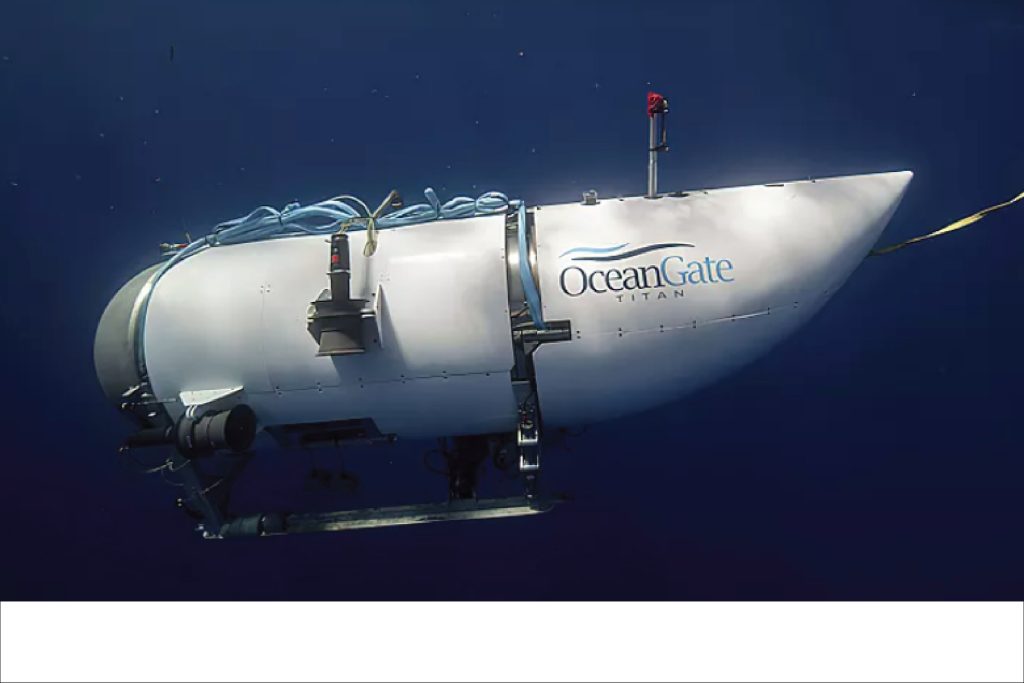What to Know About the Titan Submersible
Article Taken From ” THE NEW YORK TIMES ” (www.nytimes.com)
Officials believe the vessel that set out to reach the Titanic shipwreck with five passengers suffered a “catastrophic implosion,” a U.S. Coast Guard spokesman said.

A submersible watercraft with five people on board that went missing after setting out early Sunday to explore the Titanic shipwreck in the North Atlantic most likely suffered a “catastrophic implosion” with no survivors, a U.S. Coast Guard spokesman said on Thursday.
The U.S. Navy had detected “an anomaly consistent with an implosion or explosion” in the area of the vessel around the time communications were lost on Sunday, two senior Navy officials said on Thursday.
The identification was “not definitive,” one official said, and it was shared with the search effort. But officials made the decision to continue searching to “make every effort to save the lives on board.”
Here’s what else to know.
When and where did the submersible disappear?
The 22-foot carbon-fiber and titanium craft, called the Titan, was deployed by a Canadian expedition ship, the Polar Prince, to travel nearly 13,000 feet down to the shipwreck site, on the ocean floor off Newfoundland.
The Titan lost contact with the surface ship an hour and 45 minutes after it started to dive, the U.S. Coast Guard said.

Who was on board?
Five people were in the submersible: Stockton Rush, the founder and chief executive of OceanGate Expeditions, which operated the vessel; Hamish Harding, a British businessman and explorer; another British businessman, Shahzada Dawood and his son, Suleman, from one of Pakistan’s wealthiest families; and Paul-Henri Nargeolet, a French maritime expert who had been on more than 35 dives to the Titanic wreck.
OceanGate said in a statement that everyone on the submersible had “sadly been lost.”
It added: “These men were true explorers who shared a distinct spirit of adventure, and a deep passion for exploring and protecting the world’s oceans. Our hearts are with these five souls and every member of their families during this tragic time. We grieve the loss of life and joy they brought to everyone they knew.”
Why was the Titan diving?
OceanGate, a private company based in Everett, Wash., organizes expeditions that can last up to nine days to travel to shipwrecks and underwater canyons.
According to the company’s website, OceanGate also provides crewed submersibles for commercial projects and scientific research.
Mr. Rush, an aerospace engineer and pilot, co-founded the company in 2009.

OceanGate called the Titan the only crewed submersible in the world that can take five people as deep as 4,000 meters — more than 13,100 feet — below the surface of the ocean.
The company has taken people on tours of the Titanic site since 2021, and guests have paid $250,000 to travel to the wreckage.
In 2018, leaders in the submersible craft industry were so worried about what they called the “experimental” approach of OceanGate that more than three dozen of them signed a letter to the company, obtained by The New York Times. They warned of possible “catastrophic” problems with the submersible’s development and the planned voyage to the Titanic wreckage.
Where is the Titanic wreck, exactly?

The R.M.S. Titanic, the biggest steamship in the world at the time, hit an iceberg four days into its first trans-Atlantic voyage in April 1912.
It sank to the bottom of the ocean, and more than 1,500 people died. The wreck was discovered in pieces in 1985, about 400 miles off Newfoundland.
Searchers scoured the sea.
The U.S. Coast Guard coordinated with the Canadian authorities and commercial vessels to search for the Titan.
A remotely operated vehicle, or R.O.V., from the Canadian vessel Horizon Arctic searched the sea floor, and a French vessel deployed its R.O.V. at the site, the U.S. Coast Guard said on Thursday on Twitter.
The U.S. Navy also sent a machine that can help recover heavy objects from the sea. Sonar buoys were deployed, and sonar was used to try to locate the submersible underwater. Aircraft from the United States and Canada, along with vessels, also scanned the ocean surface.
‘Unforgiving environment’
Search teams picked up underwater banging noises, but they did not appear to have any relation to the submersible’s wreckage, Rear Adm. John Mauger of the U.S. Coast Guard said at a news conference on Thursday.
He said a debris field found on the surface led to the discovery of the Titan’s tail cone and other pieces on the ocean floor Thursday morning, about 1,600 feet from the bow of the Titanic wreck.

The discovery was consistent with a “catastrophic loss of the pressure chamber” in the submersible, he said, adding that it was too early to tell when the vessel imploded and that investigators were working on a time line of events.
Asked about the prospect of recovering the remains of the victims, Admiral Mauger said he did not have an answer: “This is an incredibly unforgiving environment down there on the sea floor.”
He also said, “On behalf of the United States Coast Guard and the entire unified command, I offer my deepest condolences to the families.”
Reporting was contributed by Nicholas Bogel-Burroughs, Daniel Victor, Derrick Bryson Taylor, Mike Ives, William J. Broad, Anna Betts, Emma Bubola, Amanda Holpuch, John Ismay, Jesus Jiménez, Victoria Kim, Salman Masood, Matt Richtel and Alan Yuhas.

